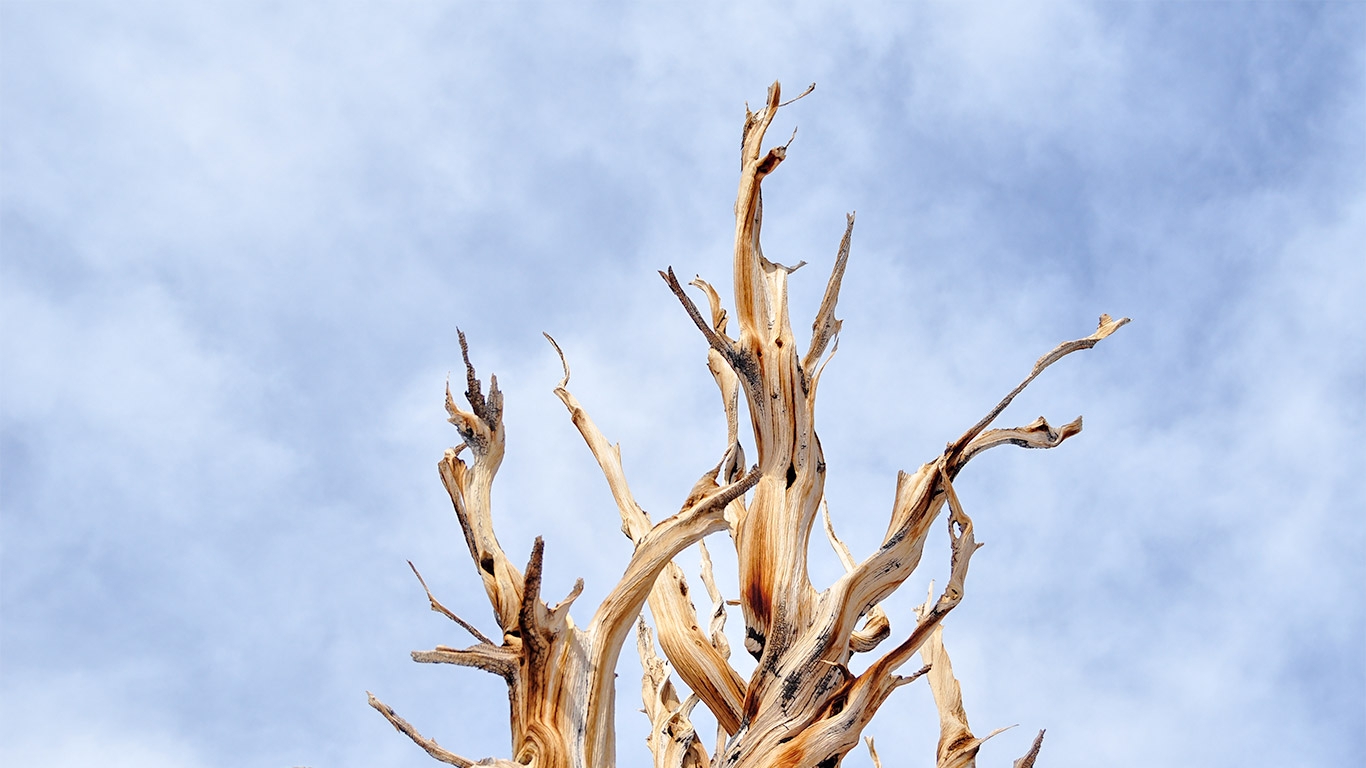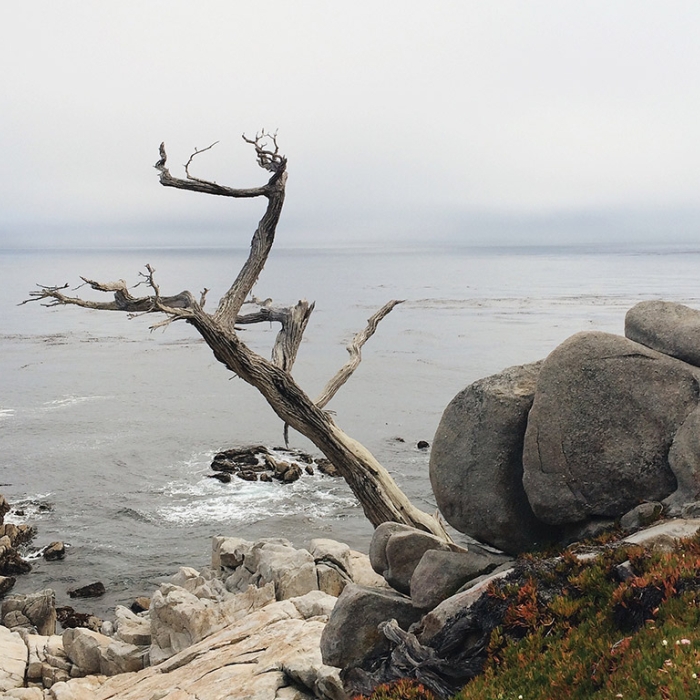The trees that rewrote history
Unzipped duffels and an assortment of video-appendages splayed on the concrete in a perfect half-circle around our maroon Ford minivan. Ricardo crouched down, jimmying camera gear, his hands full of cords, straps, and battery packs. Arthur performed ritualistic checks, opening and closing the van doors, arranging and rearranging the hierarchy of baggage in the trunk.
I sat in the back-left seat with feet up, eating an apple, observing the minutes of a dry, bright morning slip by. The shadow of the sun traced a miniature trajectory across psychedelic typography on a sign marking, The Hostel California, the most badass accommodation in Bishop, or so the website described.
“What’s up guys?” Brian popped his head into the wide van opening, “wastin' daylight.” He smiled, the sun’s rays outlining his silhouette.
“Let’s do it,” Arthur nodded, settling into the driver’s seat, “you guys ready to see some old trees?”
Windows down, we sped out of Bishop, CA heading to the White Mountains in search of the most ancient trees on the planet, the bristlecone pines. We followed a road parallel to the looming Sierra Nevada.
Arthur flicked on the turn-signal, to the left marked a wood-burned sign reading, Ancient Bristlecone Pines alongside a graphic, trident-like tree. With a perpendicular shift, we drove out of the shadow of the Sierra and into a sun-bleached landscape.
Dune-like hills rippled upwards and outwards, forming nuanced rows of color— tan, camel, beige, khaki—the myriad palette of parched dirt. We began to ascend from the valley floor, evenly spaced pinyon pine and Utah juniper shrubs peppered the scorched hillsides.
With each bend in the road, our van climbed higher; the scale of the Sierras sank in. Like sets of carnivorous teeth, the mountains vertically erupt from a flat desert bed, rising 14,000+ feet into the air. Their white and navy cliffs stood erect, a battalion of soldiers hoarding precipitation with an elevated grasp.
The junipers and pinyons gave way to a sea of limber pines, shrub-like and wilted. Our heads tilted awkwardly against smudged windows, eyes searching for that quintessential foxtail foliage. Arthur slammed on the breaks and merely pointed to the left.
“Whoa,” almost in unison, we exclaimed.
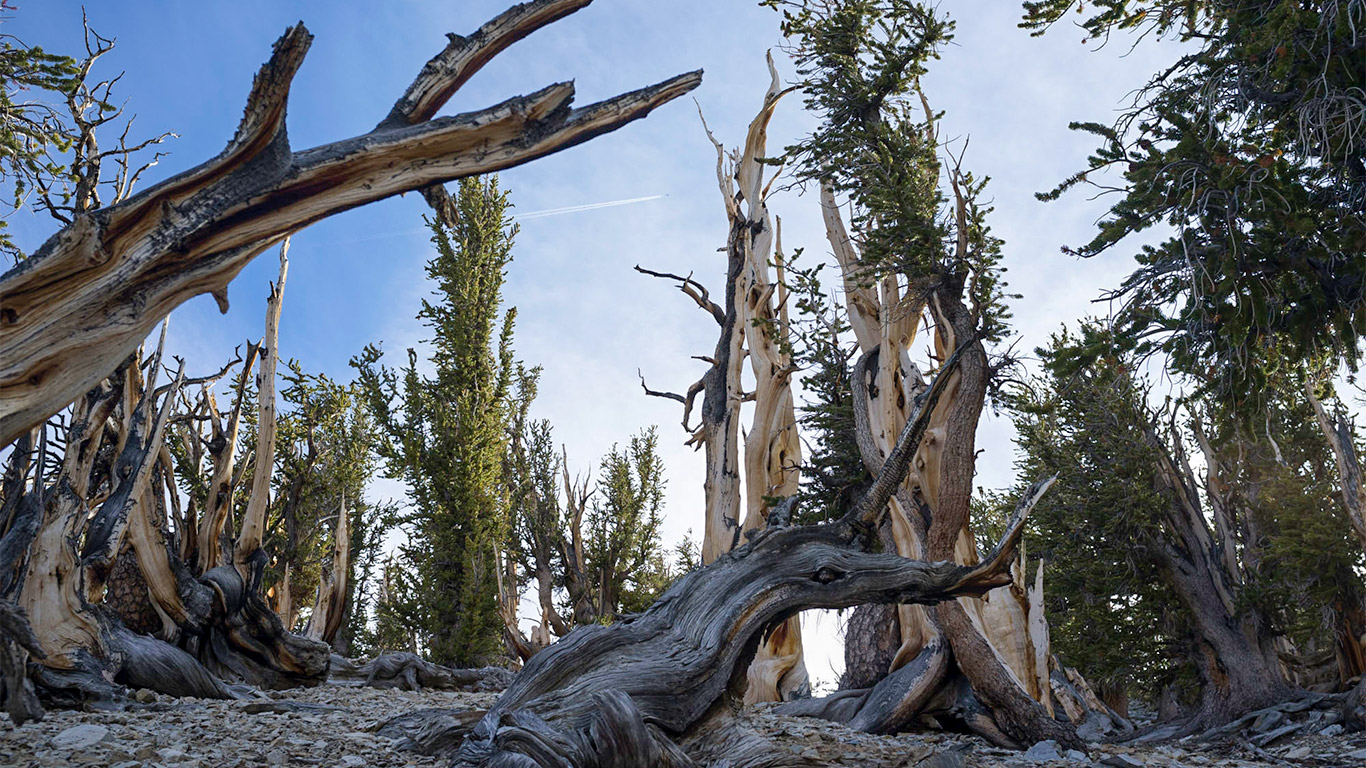
“Yeah that’s them,” I unnecessarily added. These trees are unmistakable—burnt-orange and off-white deadwood, ornery branches stacked with needles, trunks and wide limbs twisting upwards as if grown in a whirlpool. We had crossed a tangible ecological line, marked by white soil. We now saw no other plant life besides Pinus longaeva.
We pulled into the parking lot and hauled out the camera gear onto a picnic table. Arthur organized the contents of his backpack while Ricardo jerryrigged his film camera onto a panning pulley with his shoelace and a rock.
"Bristlecones grow incredibly slow, with a century of growth sometimes measuring less than one inch."
Instinctively and quietly, we all added a few layers, zipping up to our chins. The sun was blinding, reflecting off the stark white soil. The wind nipped in short bursts, slicing the thin air.
Loaded with backpacks and hands in pockets, we set on a trail into the Methuselah grove. This grove is named after a particular bristlecone that was once thought to be the oldest sexually reproducing, non-clonal organism on the planet, at 4,849 years and counting.
In 2012, Methuselah was superseded by the discovery of an even older tree in the same area. At 5,067 years old, this tree remains unnamed and anonymous. It is estimated that this tree, the oldest on the planet, germinated around 3,051 BCE, roughly 500 years before construction on the pyramids of Giza began. It is likely that many more, even older bristlecones remain ‘undiscovered’ in these remote groves.

Before the 60’s, the bristlecones were understood as merely old pines. It wasn’t until 1964 that an unfortunately serendipitous discovery occurred. A graduate geography student studying ice age glaciation patterns tried to take a sample from a particularly monumental bristlecone pine in western Nevada. His coring bit got stuck and being a frugal student, he called the local rangers who helped him retrieve the expensive tool by cutting the tree down.
As any good scientist would, this student began examining the rings, with each century counted, he realized that they had just killed the oldest known tree on the planet. He counted 4,844 rings, but since these trees don’t necessarily put on growth every year depending on conditions, the true age was estimated to be upwards of 4,900-5,000 years old.
Locals called this tree Prometheus, after the Greek titan who brought down fire from Olympus and gave it to man. Prometheus as a mythological figure, has come to represent the quest for scientific discovery and the unintended consequences of acquiring knowledge—a fitting name.
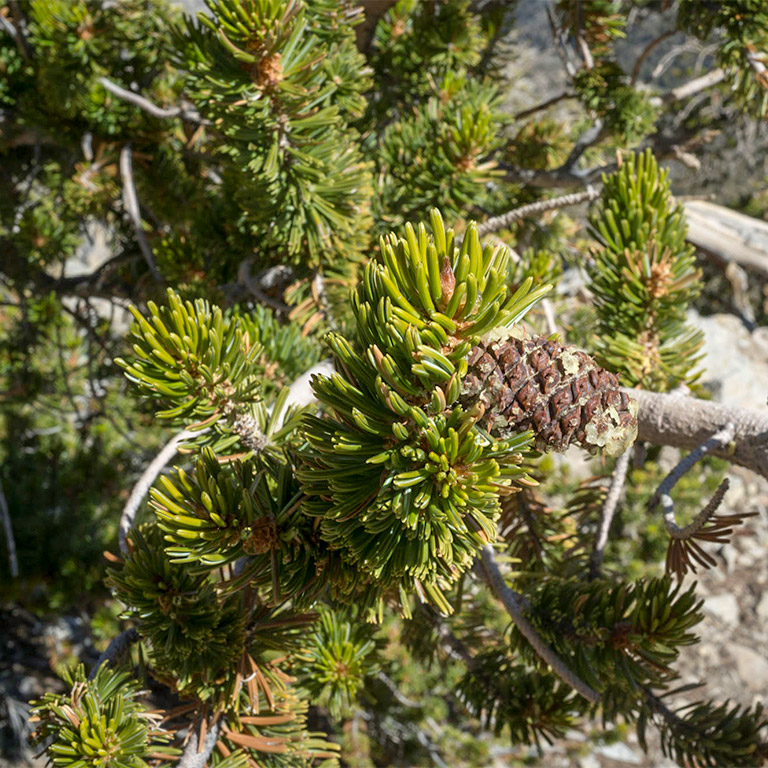
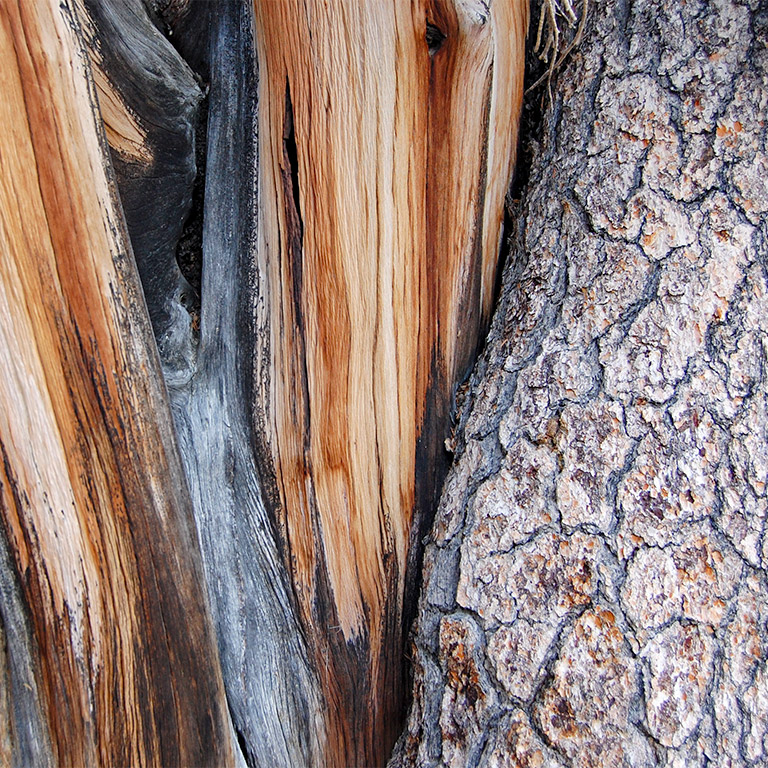
The ‘discovery’ of Prometheus prompted immense scientific research on these trees, as a tangible, verifiable database connecting us to the climatic conditions of an ancient past. Since the wood is so resinous and the climate so arid, bristlecones that may have been dead for centuries, or millennia have been almost perfectly preserved. By studying these tree rings of both living and dead Pinus longaeva, scientists have been able to amass a dendrochronological history of almost 10,000 years back.
As their age could be physically verified, carbon samples taken from these trees completely revolutionized the science of radiocarbon dating in the 60’s. So much so, carbon-14 (C-14) data collected before the ‘discovery’ of the bristlecones age had to be entirely recalibrated.
*Skip to approx 15:30 min in to listen to the full story on Prometheus.
Archeologists even found objects from digs in Europe that were over 1,000 years older than previously understood. This caused a ripple throughout the social sciences, forcing anthropologists and historians to recalculate their theories. Since the bristlecone pines provided the source for this C-14 recalibration and the frenzy it ensued, they have become known as the trees that rewrote history.
We trudged upwards on the trail, slicing through a steep, talus slope. The altitude stinging our chests as we approached 9,800 feet. We halted every hundred yards or so, unpacking and repacking camera gear, eyes constantly scanning for that perfect shot.
The landscape was an entire monoculture of bristlecones – young, old, and in the process of petrifying. They clung to the eroding mountainside occupying their own distinct spaces, with stout roots strangling piles of ashen choss.
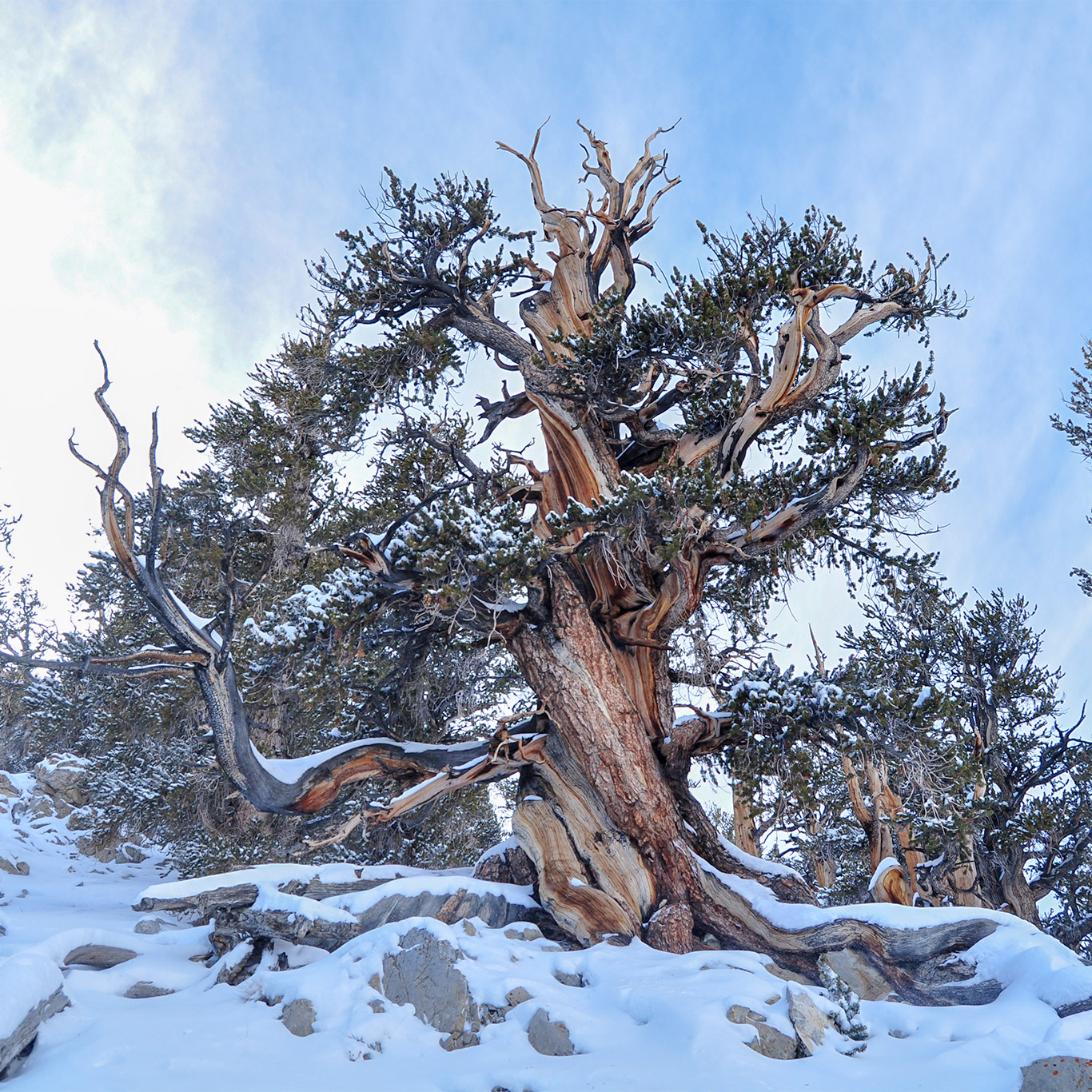
"It is estimated that this tree, the oldest on the planet, germinated around 3,051 BCE, roughly 500 years before construction on the pyramids of Giza began."
The dead stood their ground amongst the living, only tufts of dark green foliage distinguishing one from the other. Not tall by any means, the trees seemed to grow in distinct sections –burly trunks splaying from a massive root base, vertical lines of bleached, burnt, windswept deadwood jutted up against slivers of thin, dark bark.
When most people hear the name bristlecone, these ancients come to mind, but there are actually three species of bristlecone pines. The taxonomy gets a little convoluted here so bare with me: genus – Pinus, subgenus – Strobus, section –Parrya, subsection –Balfourianae, species –longaeva or Great Basin bristlecone (these are the ancients), aristata or Rocky Mountain bristlecone, & balfouriana or foxtail pine. All three species are mainly distributed between California, Nevada, Utah, Colorado, & New Mexico, but the oldest stand sentinel here on the White Mountains of California.
These trees have been able to dominate this ecological niche and survive for thousands of years due to incredibly specialized adaptations. The growth habit of sectioning off the living vein, or ‘strip-bark’ morphology, has helped the bristlecones achieve great age. They are able to protect the living cambium on the leeward side of the trunk, leaving the exposed deadwood to take on damage from fire, disease, windblown ice crystals and razor-sharp sediment.
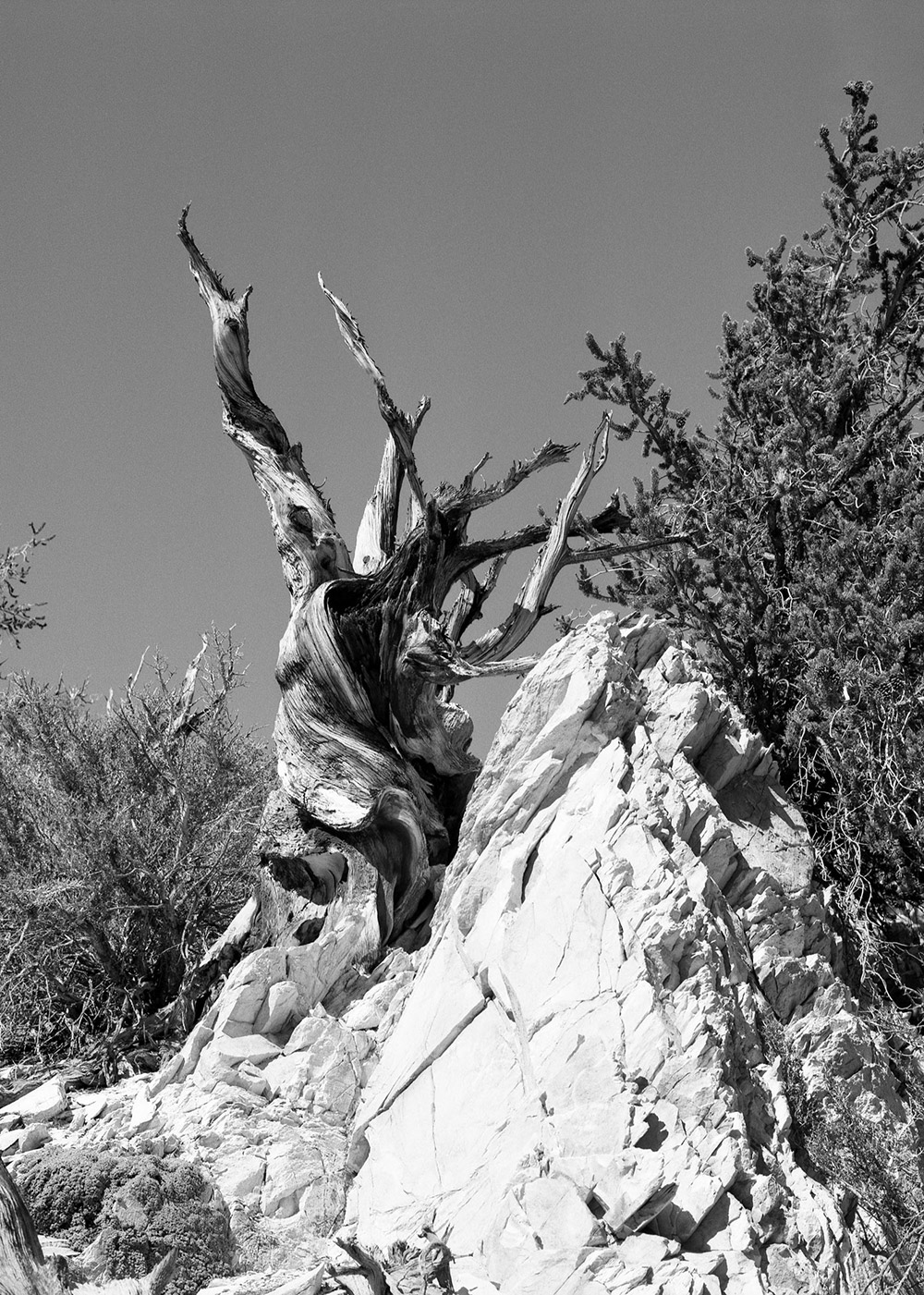
Another incredible adaptation these ancients possess is their ability to grow in dolomite, an alkaline substrate quite light in color, hence the name 'White Mountains.' The dolomite reflects more sunlight than surrounding sandstone, contributing to cooler root bases and higher water retention. Most other species cannot survive in this soil, leaving the bristlecones a monopoly over this small niche.
“You can see where the white soil stops, and the other plants grow again,” Ricardo pointed below, where a visible color shift in the hillside marked the boundary of the bristlecone territory. Only in such a harsh environment are the lines of adaptation so clearly defined.
It’s not that these trees thrive in the dolomite, between 7,000-12,000 feet high, they barely scrape by. But this struggle is another source of their strength. Bristlecones grow incredibly slow, with a century of growth sometimes measuring less than one inch. This slow, challenged growth produces highly resinous wood, resistant to rot, pests, and disease.
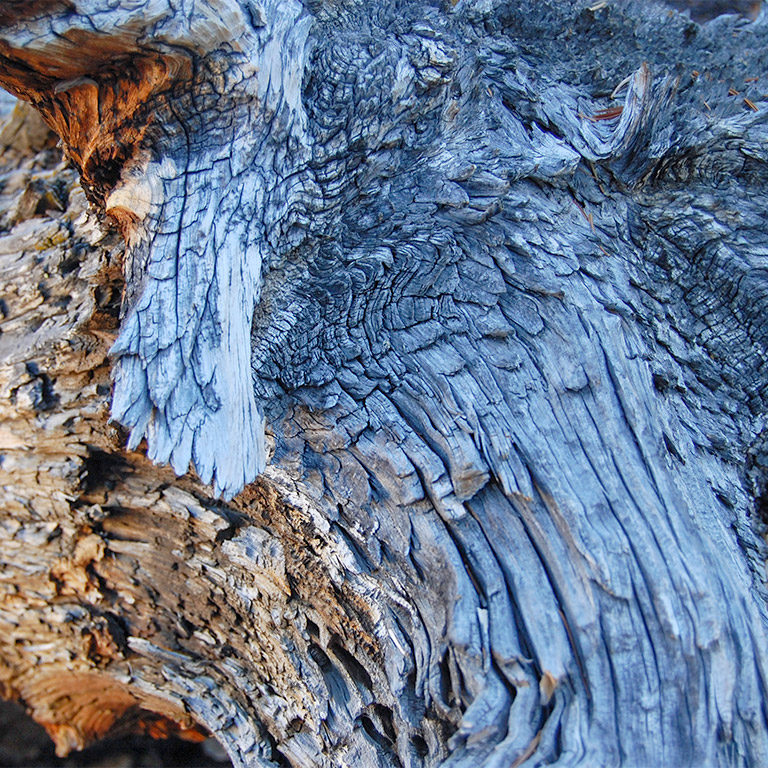
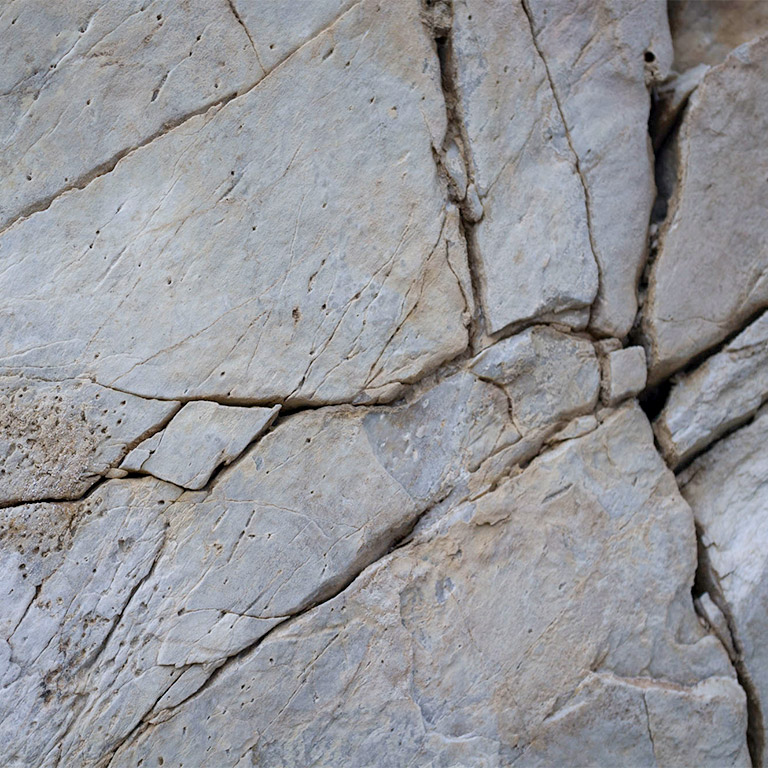
"What makes human beings special is...we give meaning to the idea of ‘ancient.’"
I crouched in the roots of a younger tree, taking refuge from the wind as Ricardo and Brian captured long panning shots of the grove, a pre-historic graveyard.
“They look like frozen flames,” Brian commented, gazing up the tortured deadwood spiraling into the sky. Ricardo and I smiled in agreeance, words alluded us.
I noticed the tree beside me, long branches like bushy tails arched low, heavy with needles. In clusters of five, the deep-green shade of each needle punctuated by a single white stripe on the inside. I recognized how many of these needles were older than myself, with bristlecones keeping their needles for up to 40 years.
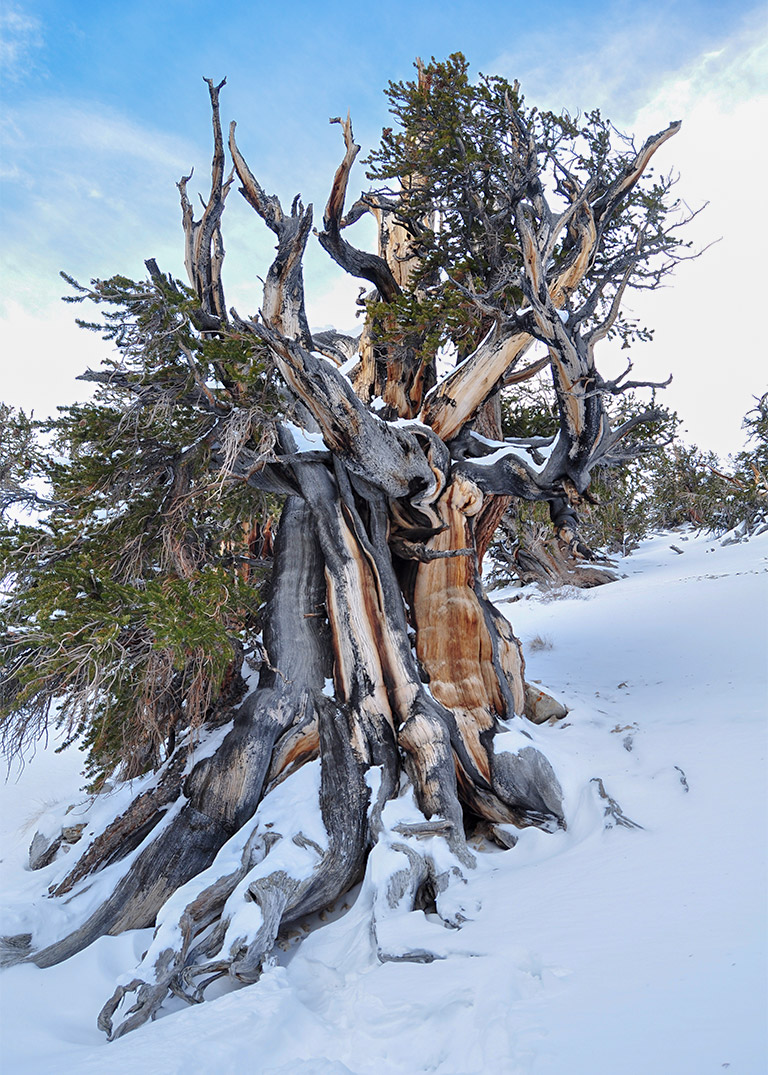
The rocky, pale earth was littered with cones, the trees’ namesake. I picked one up to feel the tiny bristles, extra armor for precious seeds. I scanned the grove, thinking of the seeds that germinated thousands of years previous and the span of time that has ensued: the rise and fall of Egyptian, Greek, Roman empires, the dark ages, the renaissance, the industrial revolution, the advent of the internet. Millions of generations of human stories have spanned and faded, history of the modern world as we understand it unfolded, all the while these tortured sentinels grew, millimeter by millimeter on this barren hillside.
The sunlight dwindled, we began hiking back to the car, our feet crunching on soil that was once the bottom of an ocean. We were quiet, utterly reverent and worn by this sovereign land.
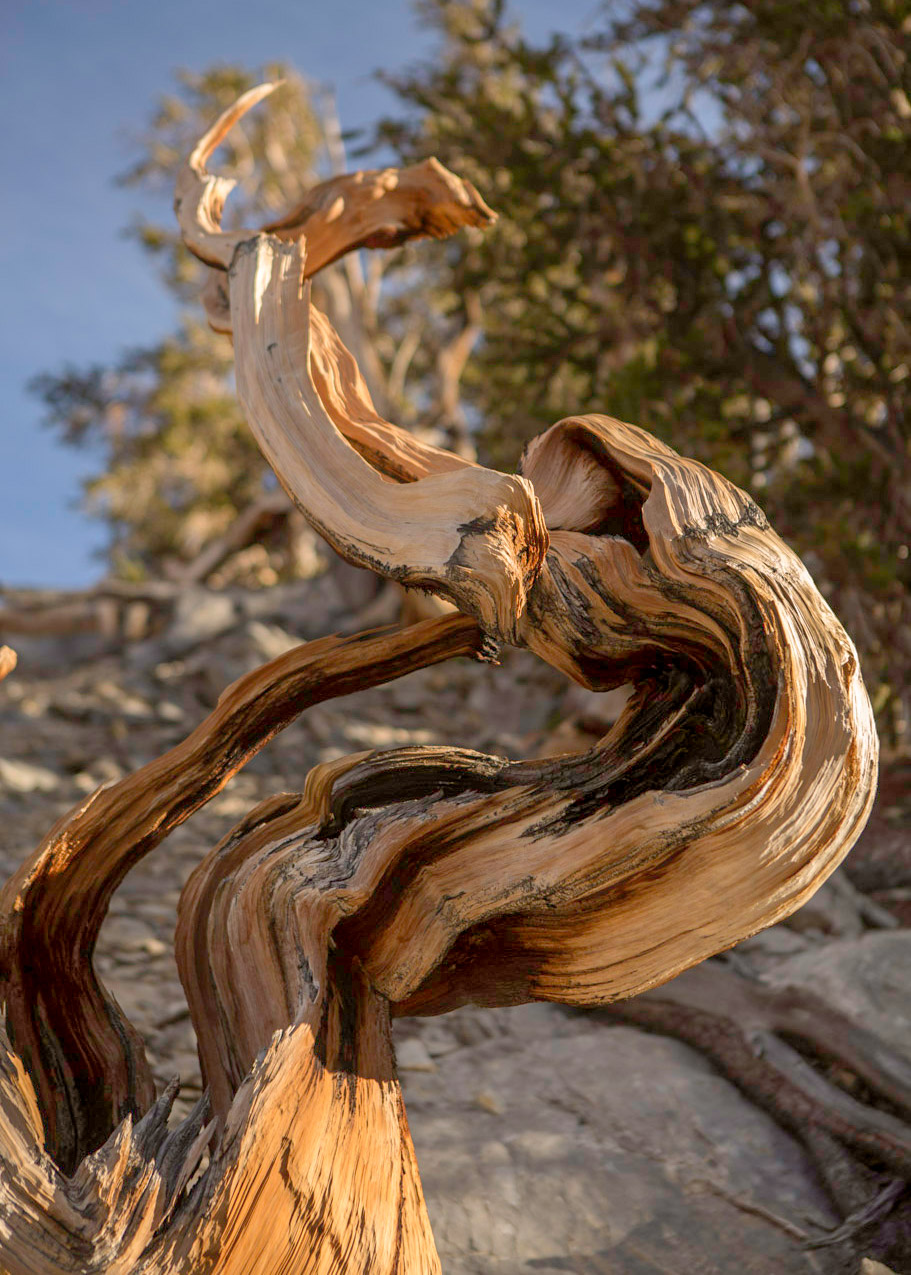

I thought of the little collected bristlecone sitting on the gravel back at Mirai, in its wooden box, waiting to become a bonsai. What makes human beings special is that we can understand the significance inherent in other organisms; we give meaning to the idea of ‘ancient.’
Ancientness takes the form of stripping down, letting go, succumbing to the outside forces. It is chaos and mass, sculpted by the surrounding climate. There’s a reason why people are naturally drawn to bonsai that capture that feeling of ancient, it provides the space for connection that one feels when visiting an ancient forest –an abstract notion of time and place beyond the individual.
The trail turned from gravel to pavement as we approached the visitor center. The white soil and deadwood seemed to glow as the light slipped away. The sky faded from magenta to indigo, tracing a skeletal outline of the Sierras in the distance. I noticed some younger bristlecones along the perimeter of the walkway; they stood tall, with soft wily branches splaying. These trees will continue to carry on the ancient legacy, inspiring generations to come.
